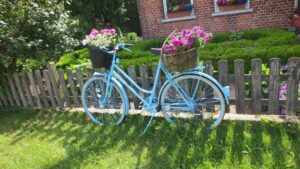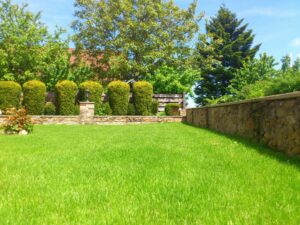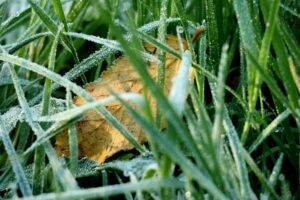When most people think Australian native grasses, their mind goes straight to tall, majestic feature grasses. Something to plant in your flower bed to add to its texture, or a lining for your driveway. It will surprise more than a few people to learn that there are also native options suitable for use as a lawn as well.
How Are Native Grasses Better?
The benefits for choosing an indigenous grass go far beyond supporting the local flora population. By using a native that is local to your area, you’re utilising millions of years of evolution, and will enjoy the benefits of a plant that has the exact qualities that are required for your area’s climate. This will mean not only a very light maintenance schedule for you, but also a very hardy lawn if conditions get tough.
Native grasses generally share a few common traits. They’ll have deep, robust root systems, perfectly suited to rebound from the long dry spells and bushfires that plague much of the country. They don’t really require fertilisation, as they have adapted to survive in the low-fertility soils of Australia.
Another common feature of Australian grasses is the beautiful seed head or flower that will show when left unmown. When allowed to flower, Australian grasses become fantastic habitats for local fauna, including pest-controlling insects, butterflies and native birds. If mown creatively, you can also use the flowering for texture in your backyard, leaving some parts to flower and some parts to remain low.
Which Grasses Are Suitable For Lawn Use?
While the bulk are tall growing species more suited for display purposes, there are numerous Australian natives that are suitable to be cut low enough for lawn. Perennial in nature, these varieties are best sourced from populations local to your area, to get the best result for your specific climate.
Natives come in both warm season and cool season varieties. Check with a McKays’ weed specialist if you’re unsure which type is best for your situation.
Warm Season
For more northern parts of the country, a warm season grass will be the answer. These grow in periods of warm weather, and will go dormant and lose colour when exposed to the cold.
Redgrass
A grass that is most commonly found in coastal areas and tablelands, Redgrass is exactly as the name suggests – a reddish green blade that naturally grows low. Its natural height of 10cm could well mean that you never need to mow the leaves back. It does, however, grow purple stems that flower to a height of 80cm, and will need to be taken care of if the grass is being utilised as a lawn.
Redgrass is a runner, using underground stems to spread out (although not particularly aggressively). It has a high heat and drought tolerance, but won’t deal well with cold snaps and frosts.
Kangaroo Grass
Best of luck finding a grass more Australian than Kangaroo. It grows in almost every part of Australia, from the deserts of the centre to the elevated slopes of the Alps. The grass naturally reaches a height of 40-90cm, but is able to be mown down to a high lawn height of 8-10cm. A slow growing grass, you won’t want to mow more than a couple of times a year.
The grass grows in tufts, so you’ll need to reseed if there are any bare or thin patches after the first sow. The plant will turn from green to maroon as it gets older, and (if allowed) will produce a beautiful red seed head in summer.
Cool Season
Suited to the more southern regions of Australia, cool season grasses will cope better with the cold, but can be more susceptible to extended periods of heat.
Wallaby Grass
Found all across the more temperate parts of Australia, Wallaby Grass is a magical combination of frost resistant and drought resistant – something that you’ll struggle to find in any non-native.
It grows to 30-80cm, but will be mown right down to 4-5cm without complaint. In clay and sandy loam soils you can almost just plant it and forget it. Wallaby Grass will happily grow without the need for irrigation, no matter how long a dry spell you might be in.
Weeping Grass
For a variety that will look the most like a “lawn”, you can’t do better than Weeping Grass. Able to be mown to whatever height you’d like, and creating a thick mat-like surface by using its underground rhizomes to spread, Weeping Grass is a terrific option for the cooler areas of the country.
A native of both Australia and New Zealand, Weeping Grass is usually found in the wetter areas of both countries, but still has the terrific drought tolerance that all natives enjoy. Combine this with a high frost, salt and acid tolerance, and you’ve got yourself a prime native lawn candidate.
While they’ve got a lot of positive features, it’s worth remembering that the main limitation with natives they’re not particularly good at coping with traffic. If you’ve got a lawn that gets the cricket stump treatment every so often, it may be worth going with an introduced variety.
But for those who just want a good looking, low maintenance patch of turf, you could do far worse than going native.
For advice on the best options for your area, consult your local McKays.




